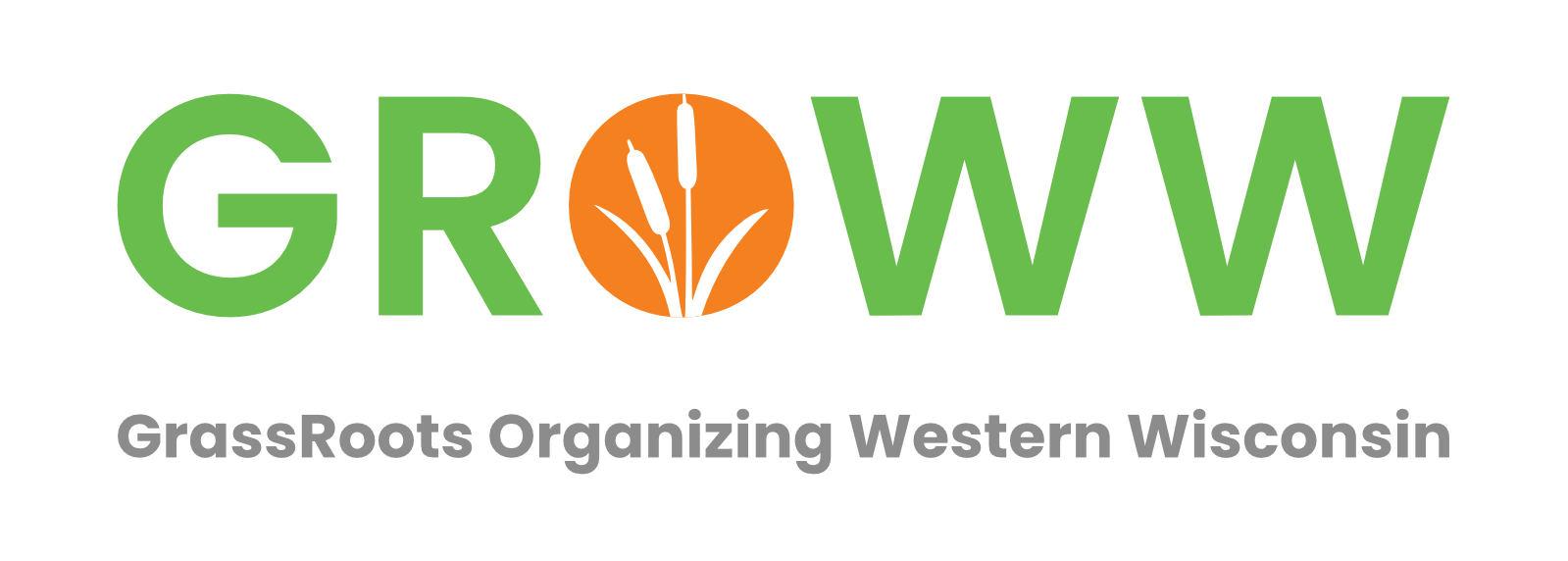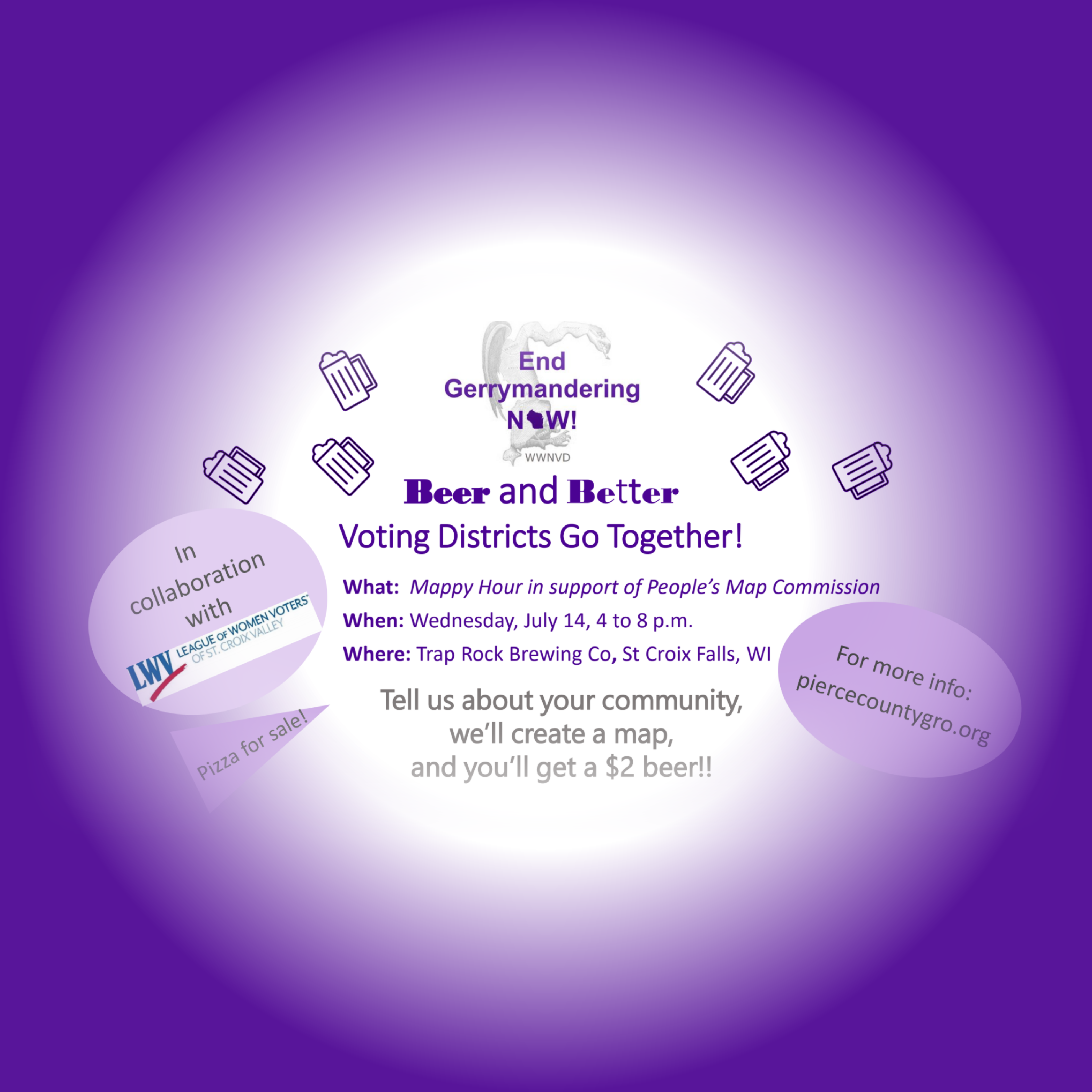“Mappy” Hour at Trap Rock Brewing Company
By: Irene Bugge
Want to have some fun and help the People’s Maps Commission draw fair, impartial voting district maps? Maps that represent all Wisconsinites, including Polk County? Then drop by Trap Rock Brewing Company in St. Croix Falls on July 14 between 4:00 and 8:00 pm for “mappy” hour. Enjoy a $2 beer, connect with others who support fair voting district maps in Wisconsin and help create “community of interest” maps.
This event is co-sponsored by the League of Women Voters St. Croix Valley and Western Wisconsin for Nonpartisan Voting Districts).
“The maps created at Trap Rock will allow the People’s Maps Commission to better understand how communities in Polk County function,” said Carolyn Saunders, chair of the local League of Women Voters. “It’s the people who live and work here who know their communities best.”
Ten years ago, when voting district maps were redrawn, the people of Wisconsin were not involved in the process. Heavily gerrymandered maps were drawn in secret, in a locked room, in a private law office. The partisan bias was so extreme that a federal court, in 2016, deemed the maps unconstitutional because they diluted the votes and voices of over half of Wisconsin’s voters.
“The People’s Maps Commission wholeheartedly believes that their success in creating fair maps depends on public input,” said Saunders. “They are committed to an open, inclusive and transparent process.”
No secret closed door meetings!
What is the People’s Maps Commission?
The People’s Maps Commission is a nonpartisan committee working to create fair, impartial voting district maps that represent all Wisconsinites. Established by Governor Evers last fall, the Commission will be drawing new voting district maps for Wisconsin later this year based on the 2020 census numbers.
The People’s Maps Commission recently completed hearings in each of Wisconsin’s eight congressional districts, listening to the people of Wisconsin about the effects of redistricting on local communities.
Residents from Dunn County for example, gave public testimony about how their small county was split into four state assembly districts and the town of Marshfield cut into two districts during the redistricting process in 2011. They talked about how these changes diminished their collective local power and sense of community.
Redistricting experts also testified at these hearings about the redistricting process, the dangers of partisan gerrymandering and the best path to achieve fair maps in Wisconsin.
Based on what they learned from the public and the experts, the Commission created a ranked list of map-making criteria. The top three criteria included an emphasis on “contiguity and compactness,” preservation of “political (county and municipal) boundaries,” and respect for “communities of interest.”
What is a community of interest and why are they so important?
A community of interest is a group of people with shared concerns and interests that can be affected by legislation. They can be rural, urban or suburban. Communities of interest can include people who are part of a lake, river or watershed area. Other examples include folks who live in the same school district, tri-city or tri-county area with shared economic interests.
Whenever possible it is important to maintain communities that have significant common interests when new voting district boundaries are drawn so that their community influence is not diminished. The People’s Maps Commission is seeking this information from communities across the state.
“We are excited to help the Commission obtain specific on-the-ground knowledge of the people of Western Wisconsin – you and me — through these ‘mappy’ hours,” said Jenelle Ludwig Krause, with Western Wisconsin for Nonpartisan Voting Districts. Krause, who has already facilitated three “mappy” hour events described the process as “fun and easy.”
“You’ll be guided every step of the way,” she said. “We use free mapping software created by a group at Tufts University called Distrctr. We’ll ask you questions such as: ‘What do people in your community have in common? What are some important places in your community? What might a community meeting be about?’ A community of interest map will grow out of your answers.”
Everyone willing to provide their community information and allow a map to be drawn will get a $2 beer.
“Beer and better maps go together at ‘mappy’ hour,” Krause added.
So please join the fun!



Comments are closed